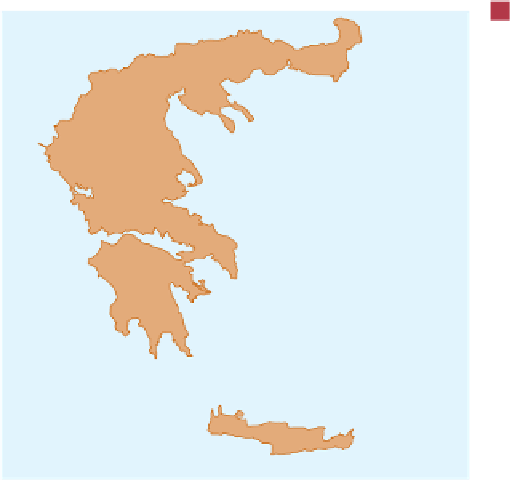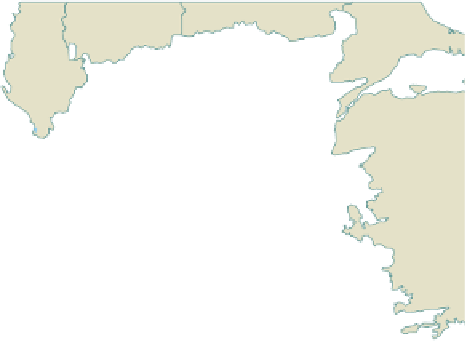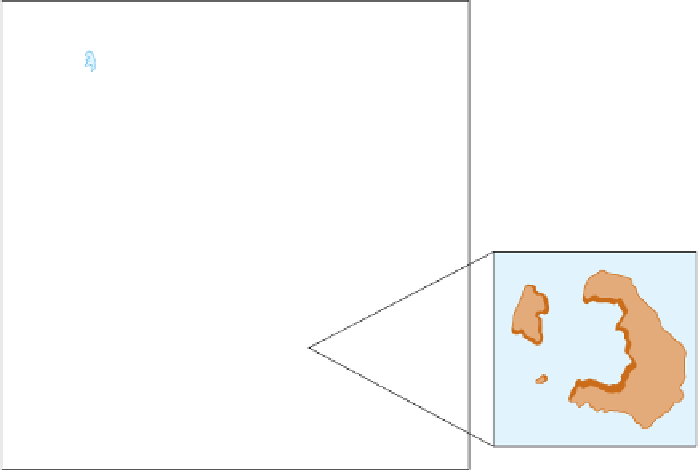Geology Reference
In-Depth Information
Geo-Focus
The Bronze Age Eruption of Santorini
Crater Lake in Oregon, which formed
approximately 7700 years ago, is the
best-known caldera in the United
States (Figure 5.9), but many oth-
ers are equally impressive. One that
formed recently, geologically speaking,
resulted from a Bronze Age eruption
of Santorini, an event that fi gured
importantly in Mediterranean history
(
Figure 1a). Actually, Santorini
consists of fi ve islands in that part of
the Mediterranean called the Aegean
Sea. The islands have a total area of
◗
These 350-m-high cliffs are part of the caldera wall just west of Fira.
b
Bulgaria
Fyrom
Albania
Greece
Santorini after the
Minoan eruption
Caldera cliffs
Lavas of historic
time
Aegean
Sea
◗
Figure 1
The Minoan eruption Santorini
that took place between 1650 and 1596
B
.
C
.
formed a large caldera. It may have contributed
to the demise of the Minoan culture on Crete
and may be the basis for Plato's account of
the sinking of Atlantis.
Turkey
Athens
Thirasia
La
Thira
Nea
Kameni
Fira
Santorini
Mediterranean
Sea
Aspronisi
Akrotiri
0
100 km
Crete
a
Map showing Santorini and nearby areas in the Aegean Sea, which is part
of the northwestern Mediterranean Sea.
most volcanism and emplacement of plutons take place at or
near divergent and convergent plate boundaries.
Mafic lava is very fluid, allowing gases to escape eas-
ily, and at great depth in the oceans, the water pressure is so
great that explosive volcanism is prevented. In short, pyro-
clastic materials are rare to absent unless, of course, a vol-
canic center builds up above sea level. Even if this occurs,
however, the mafi c magma is so fl uid that it forms the gently
sloping layers found on shield volcanoes.
Excellent examples of divergent plate boundary volca-
nism are found along the Mid-Atlantic Ridge, particularly
where it rises above sea level as in Iceland (Figure 5.15). In
November 1963, a new volcanic island, later named Surtsey,
rose from the sea south of Iceland. The East Pacifi c Rise and
the Indian Ridge are areas of similar volcanism. A divergent
Plate Boundaries
Much of the mafi c magma that originates at spreading ridges is
emplaced as vertical dikes and gabbro plutons, thus composing
the lower part of the oceanic crust. However, some rises to the
surface and issues forth as submarine lava fl ows and pillow lava
(Figure 5.7), which constitutes the upper part of the oceanic
crust. Much of this volcanism goes undetected, but researchers
in submersibles have seen the results of recent eruptions.












































































Search WWH ::

Custom Search